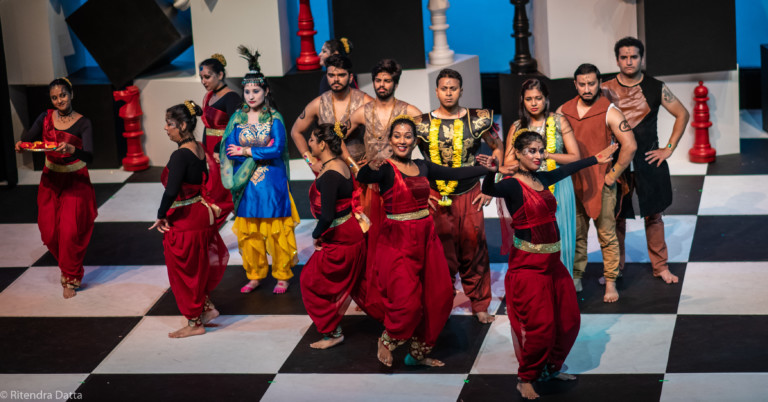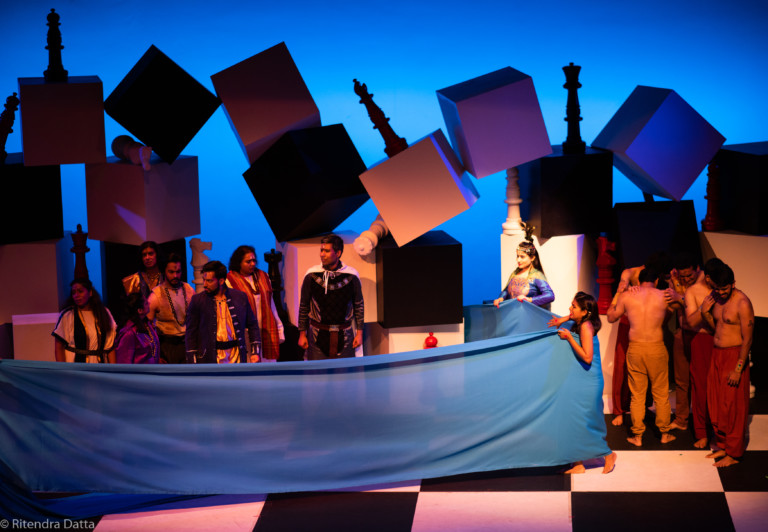 Archana Asthana
Archana Asthana
An epic story needs retelling to keep it relevant to the times, while remaining timeless. Naatak rose to this challenge with its largest production in 23 years, with 50 caste members and as many off stage hands. Sujit Saraf, the director presented the scope of this epic drama as a modern interpretation, in the contexts of subtlety and moral ambiguity.
The struggle between the “right” and “wrong” doings by the flawed characters are not imagined, but are seen in some texts of the original story, and evoke discomfort in a world where we seek black and white moral certainties. Additionally, in a saga like Mahabharat, every imaginable situation has been presented with its outcomes, flaws and all, just like how real life plays out. Citing a pithy line from the play, narrator, Vaishampayan explains to Janamejay, the great grandson of Arjun, “What is, is in the story; what is not in this story is not”.
The play was enlivened visually and its characters had an authentic feel to them through painstaking attention to detail in attire design by Soumya Agastya including tattoos based on design of coins of Kuru dynasty; powerful vocal renditions by Nachiketa Yakkundi and team; graceful, well-choreographed dances by Pragya Dasgupta, Soumya, Archana Kamath and Nisha Natraj; mood lighting by Srikar Srinath and team.
The synergy brought an allure of timeless immortality while maintaining a sense of the period. While the dance numbers were necessitated to eclipse the span of time, it felt overwhelming at times and felt like a long dance sequence punctuated with scenes and dialogues.

The play got off to a mesmerizing start, with a prayer invoking Narayan, traversing the 500 year history from Brahma to Janamejeya, delighting the audience with familiar landmark events from this epic: Shakuntala and Dushyant’s coupling; Dhritarashtra and Gandhari’s progenies, the 100 Kauravas and 5 Pandavas ; the training of the disciples with Dronacharya; Draupadi’s swayamvar; the historic game of dice between the brothers; Draupadi’s humiliation at the hands of Dusshasan; the Pandavas agreeing to a 12-year hermitic life in the forest (banvaas), and a year of living incognito (agyaatvaas); and of course, the epic war and Krishna’s sermon of Geeta.
A succinct glimpse into Krishna’s true nature as the Lord, Time, and Destroyer of evil reveals that Gods routinely take avatars and descend into mortal world when the course to the right path needs to be reset. The moral ambiguities are evident multiple times as betrayal, lies, deceit, covetous lust and greed revealing flawed characters in their quest to take revenge, justify a wrong or simply by being self-serving.
At the end, Yudhishthir is questioned at the gates of Heaven and asked to confront the conflict arising between the two sides of the same coin: victory and defeat, right and wrong, duty and rule, truth and lies. A final dance emoting all the struggles points to personal reflection and a look beyond the obvious of what is and what isn’t.







